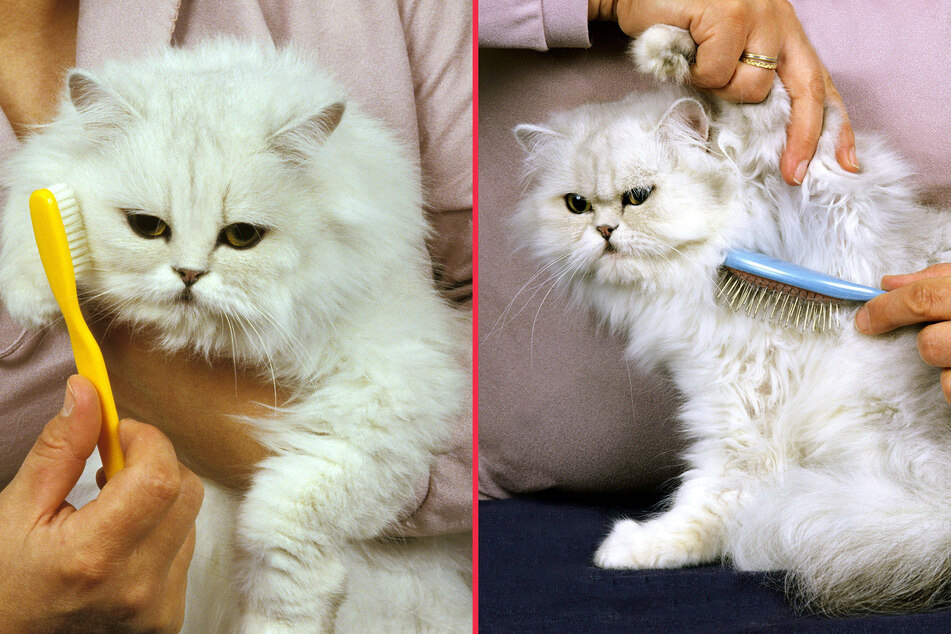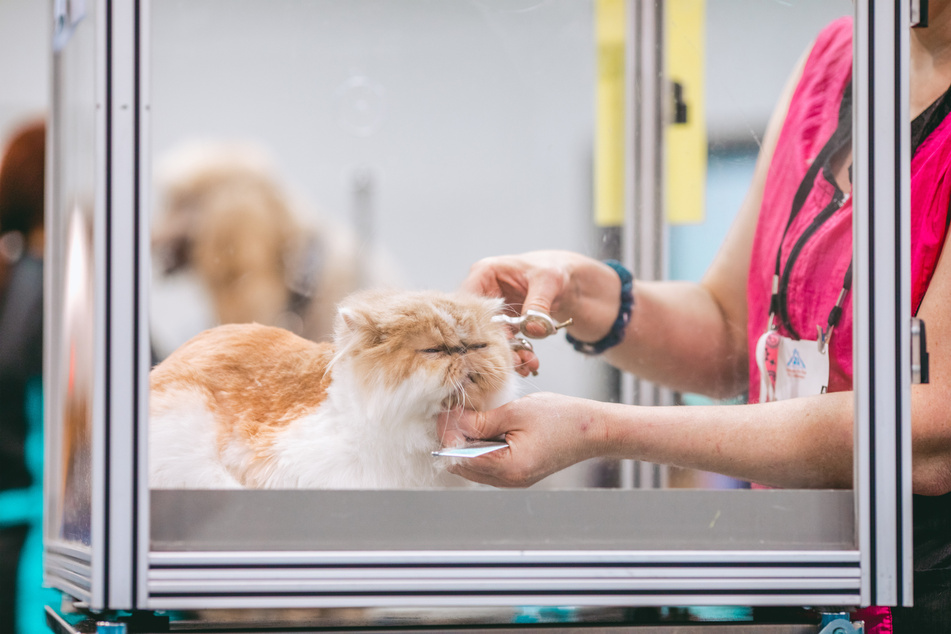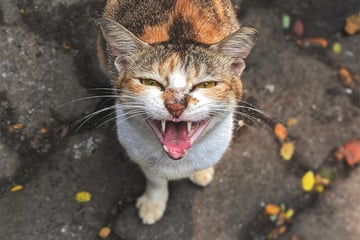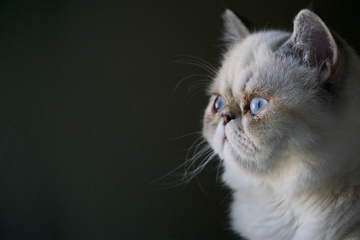How to brush a cat: A guide to brushing long-haired cats
Brushing your cat is both extremely important and extremely dangerous. Indeed, there are few things that our beloved kitties hate more than having a brush pulled through their fur. Here's how to brush a cat.

It's time to glove up and mask up, it's time to pull your sleeves down and wear an extra layer, it's time to brush your cat. One of the more important fur-care routines that you can undertake as a kitty owner, and one of the most fear-inducing, brushing a cat is no easy task, and certainly one you may need help with.
In this cat guide, TAG24 will take a look at how to brush a cat. What's the difference between brushing long-haired cats and short-haired cats, why is it important, and what's the best cat brush? Let's take a look.
Why should you brush your cat's fur?
Cat fur might seem light, fluffy, and like it'll all just blow away in the wind once it becomes loose, but this is far from reality. With such a high surface area on a cat's body (because of all the fur), hairs have a habit of getting stuck, sitting there patiently until they are either removed, become a nasty matte, or are licked off by a kitty.
You can probably tell what the problem is already: If your cat consumes this much fur, it's going to have a lot of very bad fur balls. It will also start to look pretty nasty, and your house will be covered in a layer of fur – so much so that you'll never get rid of it all.
How to brush a cat
Think before you brush. What are the reasons behind your cat's fur-based problems? Why does it look the way that it looks? Does it need a better cleaning routine, is it not handling its self-grooming very well? What about its skin, does your cat have dandruff? What about shedding, is that a big problem? Think, think, think.
There are many aspects to cat grooming. Its nails need to be maintained, its fur needs to be kept in check, and its cleanliness needs to be guaranteed. If these things can't be achieved, then your kitty is going to start developing problems. We don't want that, do we?
Get yourself a brush, a pair of gloves, some band-aids, and get going. Here's how to brush your cat!
Step 1 - Get the right brush: We'll go into the specifics of brushes further into this article, but the gist is that you need the right tool for the right job. What are you trying to achieve? Identify this and buy what's appropriate. If you're unsure, consult your veterinarian or the pet shop assistant.
Step 2 - Always use protection: Wearing long and sturdy sleeves is always a must, as well as some comfortable gloves (that your cat doesn't hate) and probably something to protect your eyes. Most cats hate being brushed (who wouldn't?), so you can expect that attacks are imminent.
Step 3 - Hold your ground: You need to hold your cat sturdily, tightly, gently, and with a lot of strength. It's best to always brush your cat with help - maybe that next-door neighbor who keeps making noise complaints – so that you have one person holding firm (and being savaged) and one person brushing like their life depends on it.
Step 4 - Go head-to-tail: Cats hate being brushed against the grain even more than they hate being brushed. Use the right brush and go from your cat's head down towards its tail, never the other direction. Pay attention to the direction of your cat's fur wherever you are brushing it, and always brush with the grain.
Step 5 - Be careful and gentle: It can be hard to be gentle and loving when faced with an angry, steaming, and violent feline, but it's still necessary. Always check for tangles and brush slowly so if you meet one you notice before you start pulling on the fur and hurting your kitty. Also try to always check for any hidden wounds or bumps, and avoid them like the plague.
Brushing is a dangerous game, but one that will bring many joys if you win it. By braving this worrisome task you will reduce the amount of fur floating around your house and will keep your cat as healthy as can be.

Brushing a long-haired cat
Long-haired cats should be groomed more than short-haired cats (for obvious reason). It's best to start with their lower body and belly, to catch as much of that underside fluff as you can before you're inevitably torn to smithereens. After that, brush their neck, followed by their back, spine, and tail. Remember – always brushing with, not against, the grain.
The most important thing when brushing long-haired cats is to look out for tangles and handle them with care. It's best to use a metal comb and to get yourself a mat-splitter if things are getting particularly bad.
Brushing a short-haired cat
Short-haired cats are far easier to groom and brush, though they can be equally lethal. The most likely thing you will need to deal with is dirt, dust, and anger. Start with their backs, necks, and chests, then proceed with their stomach and tail. The order when brushing a short-haired cat is less important.
Remember to pay attention and look for tangles and dead hair (though there will be less in a short-haired cat). It should be a quicker process and hopefully a safer one, but equally important.
Brushing a cat that hates being brushed
Safety is the most important thing to focus on when brushing a cat that hates to be brushed. These little fluff balls will slash you faster than you can say "stop" if they get the chance, so we'd recommend having them professionally groomed to reduce the frequency at which brushing is required - pass on the risk.
Cats can be groomed professionally as well, and while this won't totally negate the need for brushing at home, it will help lessen the amount of fur on your cat's body overall. When brushing, though, still do it with the help of another person and plenty of safety equipment.
Does brushing a cat help with shedding?

Shedding in cats is a very serious and very difficult problem to deal with. It can be caused by a variety of things, both harmful and innocuous (so if your cat sheds excessively and unexpected, get it checked out by the veterinarian), and is also something that in most cases can be maintained and reduced through regular brushing.
If your beloved feline friend sheds like wild, then brushing is a great way to combat the inevitable side effects. Reduce the fur-balls, reduce the allergies, reduce the fur-tumbleweed, reduce all the risks by picking up the brush. You won't regret it.
While brushing obviously won't reduce shedding, it will mitigate the side effects by removing the loose fur that would usually just sit in a cat's coat. It's important for your cat's health and for your sanity.
Best cat brush
We're not here to sell cat brushes from certain manufacturers, but we can provide a little bit of advice on which cat brush types are best for which situations. Indeed, different fur types and different grooming situations will require different things - cats with sensitive skin, for example, shouldn't be brushed with steel pins.
Here are some tips and tricks on buying the best cat brush:
- Long-haired cats, as well as cats with a tendency to have a lot stuck in their fur, should have a steel brush or comb
- If your cat needs to be brushed because it has fleas or something, you need a specialized comb bought from the vet
- Specialized dematting brushes should be used if your cat's fur gets easily matted and forms nasty knots
- Cat combs and brushes should be gentle and calming. You should spend some money and make sure that they don't have any sharp or sticky ends
- You should make sure that every brush you buy is vet-approved for the purpose of deshedding, as this is the primary reason why you are using it.
- Buy one brush that you can use for all purposes. If your brush can be used to remove dirt, deshed, and tidy everything up, then you can get your cat used to one brush and then stick with it.
Cat brushes are a sensitive topic, and one that many people have many different opinions on. What everyone can agree on, though, is that the main point of this endeavor is to deshed as best as we can.
Best cat brush for shedding
Ultimately, you're going to need to buy a specialized brush to deal with shedding. Generally made with steel pins that are tightly bound together (so they almost look like one piece of metal), these brushes strip the loose fur off of your cat's body in giant clumps that can be collected and discarded.
We are not in the business of recommending certain brands, so it's best to go and talk to your vet. Every cat owner should have a deshedding brush and should use it as described.

How often should I brush my cat?
You should brush your cat at least once a week, preferably twice. It's important to stay consistent with your brush for two main reasons: 1) Your cat will get used to it and eventually won't mind it as much, and 2) if you constantly remove loose and dead fur, your cat will be much healthier overall.
It might seem like a bit of an overkill, but if you start brushing your cat from a young age (you know, like when it's a kitten), it will help you avoid many nasty fur balls, and might even help with those cat allergies you have. Cats also get used to things over time, so if you start on them young, then they will get used to it and it will cease being a problem.
Brush your cat to make it more darling than a doggo!
You want your kitty to remain fluffy, flamboyant, and well groomed. If you don't brush its fur, then it will retch all over your carpet, leave balls of fur rolling across your floor, and will become a matted mess that's unpleasant for both you and your feline friend.
As a result, brushing your cat is a vitally important and incredibly caring thing to do. Yes, your cat will probably hate the process and, yes, you should probably take precautions, but it is worth all the risks you face.
Cover photo: Collage: IMAGO/Imagebroker



